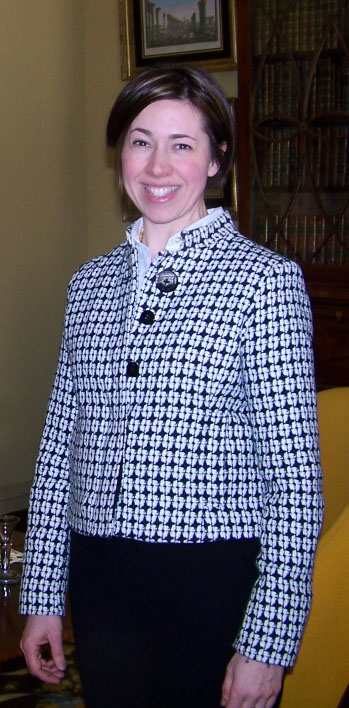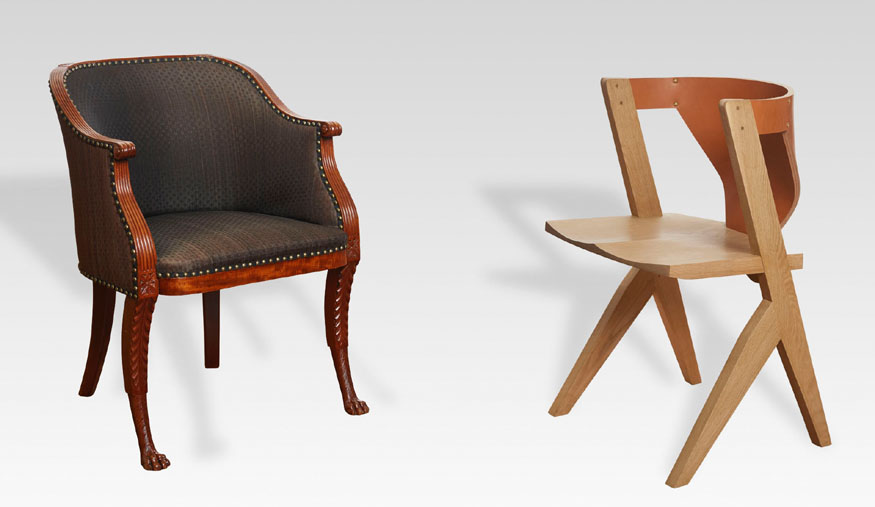 Bohemian Brooklyn’s rediscovery of the Hudson Valley is just the latest chapter in the history of a region known for its artistic ferment. Intrigued by parallels between Classical New York furniture of the early Nineteenth Century and studio furniture made by river-town artists today, SUNY New Paltz instructor and Boscobel curator Jennifer Carlquist organized “Hudson Hewn: New York Furniture Now,” on view at Boscobel House and Gardens through August 14. Carlquist, a Brooklyn transplant herself, says the 17 contemporary artists selected for the show bridge generations with their visionary response to the past.
Bohemian Brooklyn’s rediscovery of the Hudson Valley is just the latest chapter in the history of a region known for its artistic ferment. Intrigued by parallels between Classical New York furniture of the early Nineteenth Century and studio furniture made by river-town artists today, SUNY New Paltz instructor and Boscobel curator Jennifer Carlquist organized “Hudson Hewn: New York Furniture Now,” on view at Boscobel House and Gardens through August 14. Carlquist, a Brooklyn transplant herself, says the 17 contemporary artists selected for the show bridge generations with their visionary response to the past.
What inspired “Hudson Hewn”?
Boscobel is a wonderful place to be if you are interested in American Classical furniture. The collection here rivals those of the Metropolitan Museum of Art and Winterthur Museum in that category. Additionally, teaching at SUNY New Paltz brings me into regular contact with working artists. In 2012, Peter Kenny, who heads Boscobel’s collections committee, hosted a symposium at the Met that explored parallels between Duncan Phyfe and contemporary makers. That very much inspired me. I discovered that several of the artists I’d invited to participate in “Hudson Hewn” also attended that Phyfe symposium. We all feel privileged to be replaying that conversation here at Boscobel four years later.
Is “Hudson Hewn” a subtle pitch for antiques?
Design doesn’t have to be 200 years old to appeal. I like to think that the audience for Brooklyn Flea, Fine Woodworking magazine and Boscobel could be the same. People are definitely interested in hand craftsmanship, they are just not so period specific today. Someone who looks at Wallpaper magazine, which showcases design with a capital D, can also see that Phyfe was every bit as forward thinking as contemporary makers.
How did you locate and select artists?
I collected clippings and screen shots from many sources, and attended high-end crafts fairs such as Field + Supply, where several makers we’ve included exhibit. I started with a list of 50 makers and from those selected 17 who have a direct connection to antique furniture in Boscobel’s collection.
Other design hotbeds besides the town of Hudson?
Kingston and environs, and Beacon, Woodstock and Newburgh. It’s part of a collective mentality. Artists like to congregate as much as they like their independence. It’s a very fertile environment here, with glassblowers, potters, metalworkers and other creative people.
Are your contemporary artists roughly the same age?
Wonderfully not. The youngest, Nikolai Jacobs of Rosendale, is in his twenties. Rob Hare of Ulster Park entered art school in the 1960s.
Are some more commercial than others?
Atlas Industries of Newburgh makes a modular storage system that is very popular with designers. Munder-Skiles of Garrison also does large volume. Michael Robbins of Philmont has a studio practice but also designs for the retailer West Elm. This combination is part of the furniture story. Phyfe made furniture on spec, as special commissions and in quantity for export.

Left, Grecian easy chair attributed to Duncan Phyfe, circa 1815–20, Boscobel House and Gardens. Right, Wickson chair by Michael Robbins, 2015. —Boscobel House and Gardens photo
Were your artists influenced by Boscobel?
It was important to me was to get as many of them as possible here to Boscobel. None had been inside the mansion. Jeff Johnson of Poughkeepsie makes kinetic furniture. He was very taken with our New York City dumbwaiter of circa 1810. After studying it, he created the rotating, wall-mounted china cabinet in the show. Those connections were exciting for me.
Do you have a favorite furniture pairing?
I love the circa 1817 Grecian easy chair by Phyfe paired with Michael Robbins’s Wickson chair of 2015. Both are thrones, real power furniture. But Phyfe is looking at archaeology and Classical antiquity in a direct way. Robbins is very forward looking.
Audience engagement?
It has been so rewarding. People scratch their heads but look again. Children often can’t distinguish old pieces from new. Some contemporary furniture is rustic, while the early Nineteenth Century pieces are polished and sleek. Children love the Circle Arm easy chair by Christopher Kurtz of Kingston. It’s a great geometry lesson.
How about collectors?
These makers form wonderfully rich and intimate relationships with their clients. The artists are passionate and charismatic. They are involved in collectors’ lives and are eager to know how collectors live with the things they make.
Anything you covet for yourself?
I’ve been pleasantly surprised to acquire friends, but alas, no furniture.
A woodworking demonstration day with Woodstock artist Michael Leggett, who contributed a demilune table and candlestand to “Hudson Hewn,” is planned for Saturday, June 18. The 44-page catalog Hudson Hewn: New York Furniture Now sells for $22. Boscobel is on scenic Route 9D in Garrison, N.Y. For information, www.boscobel.org or 845-265-3638.
—Laura Beach




